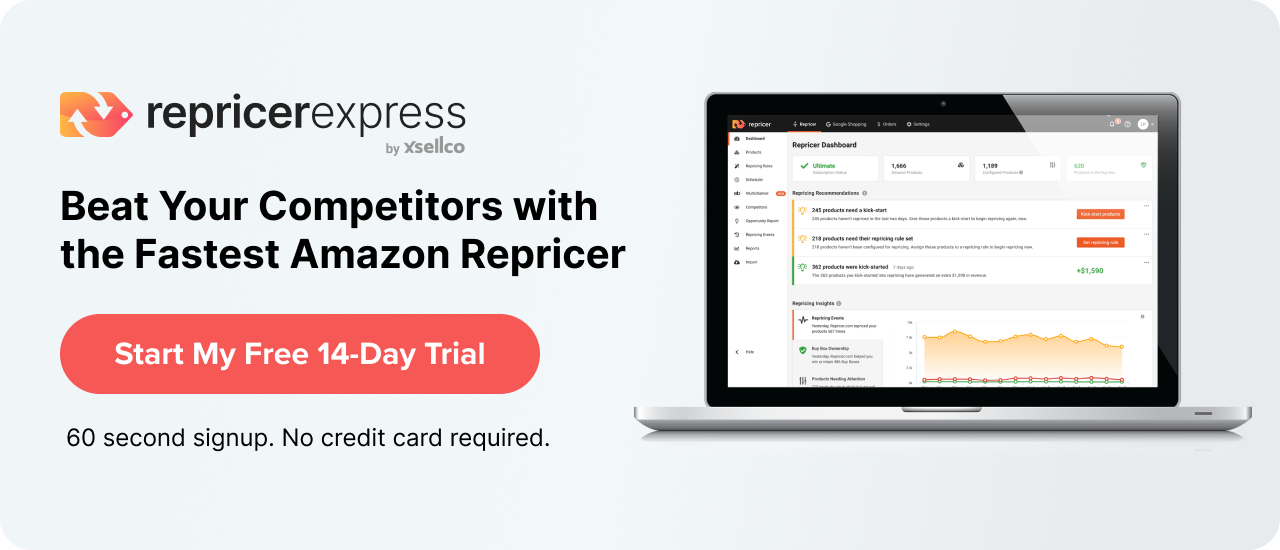Being successful on Amazon has a lot to do with the kind of product you sell, along with pricing it competitively. But how do you know which is the perfect product to sell on Amazon? We’ve got the answer!
Knowing Why You’re Searching for the Perfect Product
We can talk until we’re blue in the face about awesome product ideas, but unless you know how to use them correctly, the actual item won’t make any difference.
Amazon is a place where you want to create and grow a business, not treat it like a yard sale. That means if your attitude is to suss out super-cheap items and turn them around for a tidy profit on Amazon, things are probably not going to work out.
That’s not to say you can’t go after cheap products, like those on Alibaba, but to keep your primary focus on cultivating a healthy business and creating your own brand. Okay, cool — got that? Great, let’s learn about how to get to that point.
What the Perfect Product Looks Like
Before you start scribbling down a list of product ideas, use this checklist to make sure any potential products fit them. If you follow this checklist, you’ll have a much better chance of hitting a home run right off the bat.
- Something that can be used all year instead of seasonally
- Something with a price between $10-50 and the weight of a Mac Air or less
- Something that’s durable and sturdy, but also something people can buy more of multiple times
- Something that’s similar to what’s on eBay and/or not easy to outsource in China
- Something that can garner multiple keywords
- Something that doesn’t have a brand name on it
- Something that can be easily upsold or cross-sold with other products
- Something that can allow for product descriptions to be optimised and improved in the future
- Something that won’t cost you more than 25% of the sale price to make
But we also want to stress that if your product ideas don’t exactly match this checklist, don’t sweat it. The idea isn’t to find that one thing that’s exactly perfect, but an inventory of items that are popular, profitable and simple to work with.
Importance of the Checklist
Some of the above points may seem pretty self-explanatory, like the importance of selecting items that are also sold on eBay (i.e. the potential visibility is higher and you won’t have to fight as hard at convincing buyers that this item is worth getting).
But some of the other points may need a bit more background. Take the price, for example. You see manufacturers selling things for high prices all the time, like Kindle e-books or Apple iPads. So, why not copy their lead and try and earn a higher profit?
That’s because while buyers will buy those items, they won’t buy them very often and you’ll lose more in sales over the long-term. Switching to a $10-50 price plan makes your items more attractively affordable, plus lessens the risk for them if they feel they’ve made a bad purchase.
The brand names point is an interesting one because many merchants will understandably argue that a brand name is more familiar to buyers, whereas a ‘blank’ item doesn’t have the same weight behind it.
But if you think of it in the inverse, it makes a lot more sense. You’ll want to pick an item in a category where there are no brand names, precisely so you can capitalise on it for the very reason we talked about above. If you’re the only one in the category selling a brand-name item, guess how strength will work in your favour?
Final Thoughts
Above all else, find products you’re interested in and can get better at knowing about. After all, if you don’t believe in what you’re selling, how will buyers? And once you start passing on your passion, make sure you’re using RepricerExpress to keep up with the demand. It’s really simple — you only have to sign up for your 14-day free trial.



